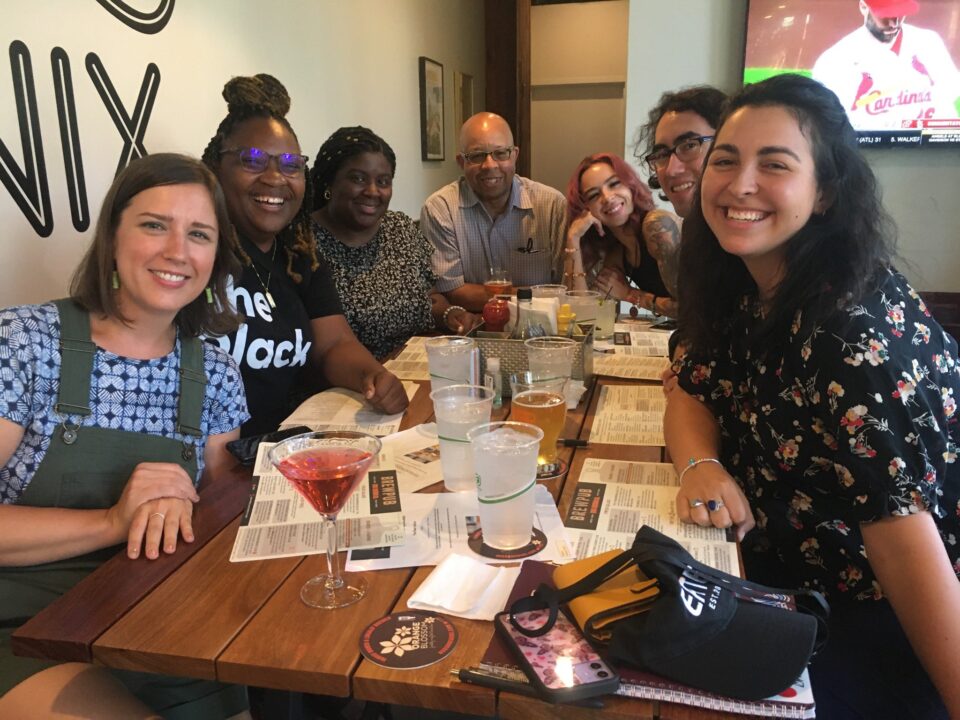Dispute With News Organization Goes Viral
. . . NAJA Is Growing, Considering Name Change
Black Media’s ‘Largest Investment’ on Gun Violence
. . . Database Surfaces the Mass Killings We Miss
Blacks, Latinos React to Biden’s Student Debt Move
‘Capitalism Crisis’ or Not, Jelani Cobb Must Fundraise
Law Curbing Recording of Police Challenged
Editor Won’t Agree to ‘Fascist’ GOP Limits
Newspapers Helped Shape ‘Father of Black History’
More Blows to Diversity at Warner Bros. Discovery
Brown U. Acquires Papers of Mumia Abu-Jamal
Keeping the Focus on Environmental Racism
Short Takes: Mizell Stewart III; Torrance, Calif., police; Biden’s approval among Blacks, Latinos; Russian news media’s spin on Ukraine; humanizing journalism terminology; Errin Haines; disruption at White House press briefing; Jeffery Gerritt and Tony Norman; reaction to survey of N.Y. Times performance ratings; “Oye: The Lab for Latinx Creators”; National Endowment for the Humanities grants; use of newspapers by the newly emancipated; Michaela Pereira; Rana Cash; WNYC newsroom diversity; “Black Is Beautiful” photography; helping newsrooms better engage with and serve diverse audiences;
V. Dion Haynes; A. Sherrod Blakely; Morgan State U. filmmaking; Puerto Rico attacks on journalists and photojournalists; Chronicle World blog on Black Britain; world’s sacred rivers; fundraising for underpaid Liberian journalists; package of blood at journalist’s door; Vietnamese journalist’s nine-year sentence; state of emergency for journalists in Bolivia; Nicaragua’s seizure of newspaper space; Pakistani repression; Nigeria revocation of licenses; Nigeria’s defamation and cyberattack investigations; brutal assaults in Zimbabwe.
Originally published Aug. 26-27, 2022
Support Journal-ismsDonations are tax-deductible.
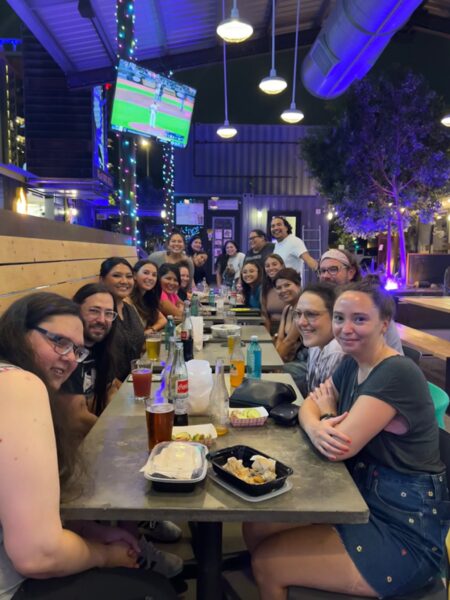
a few NAJA staff members and the inaugural ICT/NAJA/Cronkite fellow commune at
the Phoenix conference. (Credit: Twitter)
Dispute With News Organization Goes Viral
By Greg Moore
Friction between the largest group of American Indian journalists and The New York Times went viral Friday as the Native American Journalists Association’s board president, Francine Compton, said she asked the nation’s “newspaper of record” to apologize for what she deemed racist, stereotypical coverage.
Compton told more than 150 attendees at NAJA’s annual business luncheon at the Hyatt-Regency Hotel in downtown Phoenix that she told Times leadership not to show up without that apology.
“I said: ‘We are not ready for the New York Times to be here,’” said Compton, of the Sandy Bay Ojibway First Nation.
NAJA has embarked on an aggressive outreach strategy that has the organization’s membership ranks swelling to about 950. About a decade ago, NAJA counted only about 240 members.
The dispute with the Times went viral on social media, with conference attendee Tristan Ahtone, Kiowa, a former NAJA president, tweeting, “Scoop: @najournalsits asked@nytimes to apologize for racist, stereotypical coverage. NAJA President@FrancineCompton says NYT refused and asked for refunds on their $55 NAJA memberships. Times reporters are not at #NAJA22.”
By Friday afternoon, the message had been shared on Twitter nearly 700 times and garnered more than 1,500 likes.
The criticism of the Times stems from the Native journalists’ 2021 NAJA Media Spotlight report, which begins:
“In view of continual problematic media coverage of Indian Country, the Native American Journalists Association (NAJA) … specifically examines The New York Times and their coverage of Indian Country in the United States and other Indigenous communities around the world. News coverage of Indian Country and Indigenous communities that utilizes five or more NAJA Bingo Card words (e.g. alcohol, violence, drumming, poor education or horses), otherwise known as Native American cliches or stereotypes, may be categorized as problematic and create specific harmful frames detrimental to Indigenous communities.”
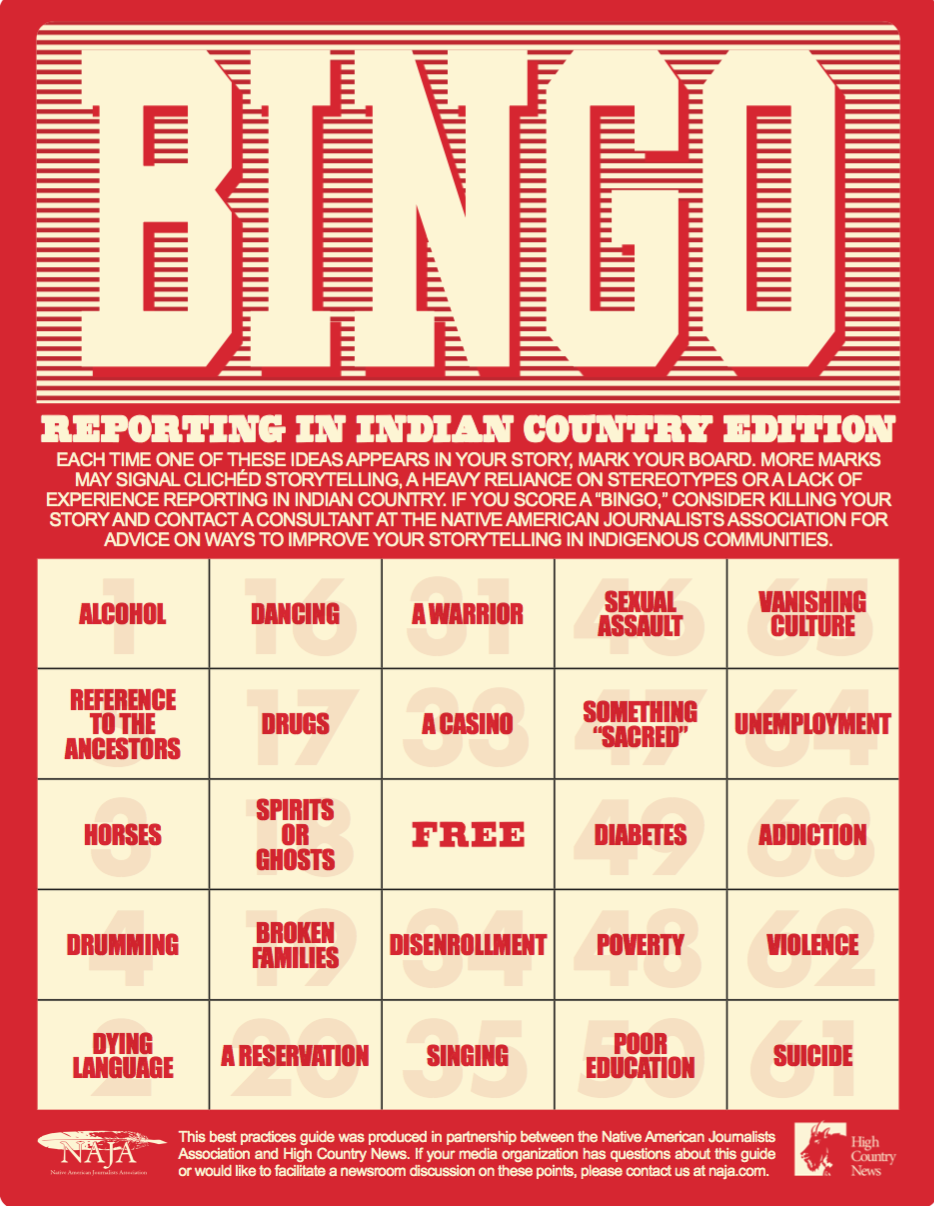 The report comes with a graphic showing a growth in Times subscribers from 2.3 million in 2015 to about 7.8 million in 2021. Each year, NAJA surveyed the paper’s work until they hit “bingo.”
The report comes with a graphic showing a growth in Times subscribers from 2.3 million in 2015 to about 7.8 million in 2021. Each year, NAJA surveyed the paper’s work until they hit “bingo.”
In 2020, that took 78 articles.
In 2021, it took only 15.
Charlie Stadtlander, director of external communications for the Times newsroom, defended his publication without apology in an emailed statement Friday:
“The New York Times has had ongoing discussions with NAJA leadership regarding concerns they raised with some of our reporting in 2019,” it read. “After NAJA expressed that they were not comfortable with The Times being at the 2022 conference, we respected their wishes and did not attend. We welcome continued dialogue with NAJA and seek future participation at their events.
“The New York Times pursues thorough and detailed news reporting on the lives and culture of Native Americans, First Nations people in Canada, and Indigenous peoples throughout the Americas. Our commitment remains strong that as this coverage continues, it is representative of voices and perspectives from these communities.”
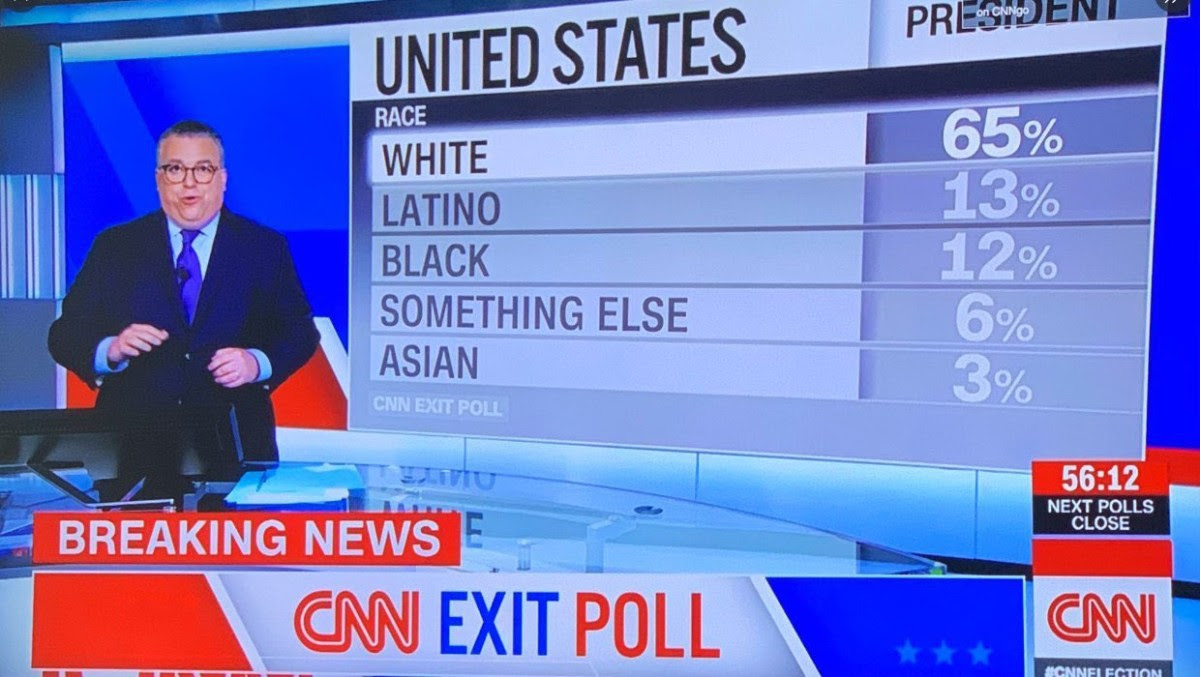 Compton also called out CNN for a 2020 election night graphic that put Native voters into a category it called “Something else.”
Compton also called out CNN for a 2020 election night graphic that put Native voters into a category it called “Something else.”
“Apology is the first step toward reconciliation,” Compton said, reflecting on a conversation with her father, Jim Compton, a longtime NAJA member and a pioneering Native American journalist in mainstream media.
She had been wrestling with frustration over the disputes when her father told her that the criticisms of the two news organizations were “a gift of shared knowledge” and that it was “up to them to open up those gifts and learn from them.”
CNN declined to apologize at the time of the dispute, which emerged in November 2020. An attempt to reach CNN via email Friday afternoon for additional comment was not immediately successful.
Compton said it was an important victory for her organization to stand up to the huge media powers.
“I know that not everyone is going to be able to come out against CNN or The New York Times the way we have, and those are relationships that I hope to re-establish through all of these gifts,” she told Journal-Isms. Compton said that diversity within newsrooms will go a long way toward remedy. If Native journalists are in the room when decisions are being made, there will be more people to prevent such mistakes.
More diversity will also lead to better coverage, she said. “They’re missing out on some of the best stories.”
Greg Moore is an Arizona Republic sports columnist, documentarian and member of the editorial board. He is also president of the Arizona Association of Black Journalists.
. . . NAJA Is Growing, Considering Name Change
The Native American Journalists Association underwent massive expansions in revenue and membership over much of the last decade, leaders say. It is growth they plan to continue with a push into international markets beyond North America, signaled by a proposed name change to the Indigenous Journalists Association.
Such a name change would follow that of Indian Country Today, whose editor declared in June that it would be called “ICT.”
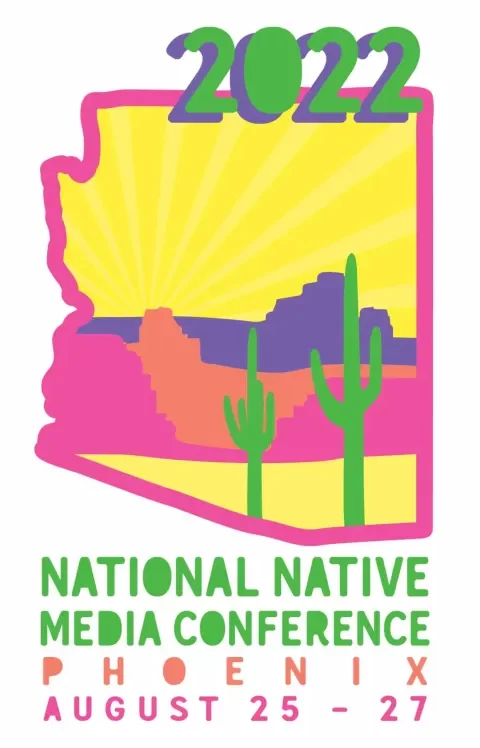 “ ‘Indian’ is often a term used by the elder generation because that’s what the government called them and they called themselves. It’s in federal documents,” Jourdan Bennett-Begaye wrote. “ICT’s mission is to build the next generation of storytellers and to build a sustainable news organization for them. Times are changing. Innovation and evolution are needed.”
“ ‘Indian’ is often a term used by the elder generation because that’s what the government called them and they called themselves. It’s in federal documents,” Jourdan Bennett-Begaye wrote. “ICT’s mission is to build the next generation of storytellers and to build a sustainable news organization for them. Times are changing. Innovation and evolution are needed.”
NAJA Executive Director Rebecca Landsberry-Baker, Muscogee, speaking on the sidelines at the organization’s annual business luncheon at the Hyatt-Regency Hotel in downtown Phoenix Thursday, said the group has gone from about 240 members when she assumed her post in 2013 to more than 950 today.
She told the roughly 170 at the meeting that the increase coincides with a growth in total net assets from about $120,000 in 2015 to more than $870,000 today. That tops a 600 percent growth in membership and revenue.
Landsberry-Baker said the growth was a result of strategic planning that focused on increased visibility, in Indian Country and beyond.
“A very dedicated volunteer board that was very deeply connected to their communities (was) doing the outreach … saying, ‘You need to come plug in to NAJA, we have resources for you,’” Landberry-Baker told Journal-Isms.
The resources include training opportunities, reporting guides and a “Bingo card” meant to shame outlets that engage in stereotypical coverage of Native communities. Landsberry-Baker said the organization has been dedicated to expanding those resources, “not just for tribal media, but a big piece of our work that has grown in the last couple of years is reaching mainstream outlets.”
The group also has been committed to “building partnerships with funders who want to support journalism and want to support diversity within journalism,” she said, specifically praising the Ford Foundation and Democracy Fund for helping during the pandemic.
NAJA Board President Francine Compton, of the Sandy Bay Ojibway First Nation, said that over the last year the organization has called out large, mainstream outlets, including The New York Times and CNN, for problematic coverage.
The Times dispute went viral on Twitter when Compton closed her summary with a call for continued growth, citing the organization’s deep ties to Canada. Her tribe spans both sides of the border, which Native communities call the Medicine Line.“ This is the future,” she said, unveiling a new logo and name for the organization: Indigenous Journalists Association.
The name change will go to a vote soon, Compton said.
“We surveyed our membership to get a sense, take their temperature, so to speak, to see how receptive they were to that, and it’ll be voted on at our next conference,” in Winnipeg, Canada.
About 340 people attended this year’s conference, Landsberry-Baker said.
The proposed name change “means that we can expand globally,” Compton said, “and that we can represent Indigenous people all around the world, who are journalists telling stories for their communities.” — Greg Moore
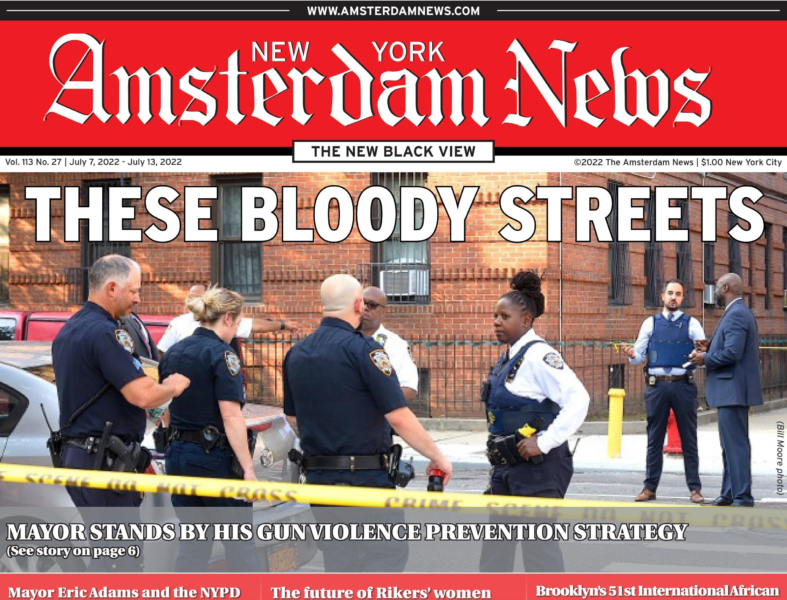
Black Media’s ‘Largest Investment’ on Gun Violence
The New York Amsterdam News says it will undertake “the largest investment in Black media” on the issue of gun violence in Black and Brown communities, reporting on it as a public health crisis.
The Black community newspaper will “highlight the solutions that seek to resolve the underlying problems that result in gun violence in Black and Brown communities. This is in contrast to typical media reporting that focuses only on the incidents of gun violence in Black and Brown communities –– reinforcing and feeding the problem.”
The initiative will come with a three-year, $3 million budget to be raised from donors, and half of that money is to be spent for “Leadership, Journalists, Photographers and Videographers.”
Demaso Reyes, lead editor for the newspaper’s investigative unit, told Journal-isms Friday, “the $3 million we hope to raise will come from foundations and individual donations. As we receive funding we will be hiring staff reporters and editors to work on the project along with freelance reporters, data journalists and photographers.”
The newspaper first announced the initiative on Aug 11.
It said then that it would:
“Promote a reduction in violence driven by publishing and presenting more than 200 counter narratives which focus on the solutions to gun violence and its root causes and the all too often untold stories of what is going right.
“organize at least 12 virtual and in person townhalls and convenings that will bring together stakeholders, build national momentum and deliver accessible, actionable tools for positive change.
“produce in-depth, long form explorations through our Blacklight investigative unit that will reshape the understanding of both the root causes of gun violence in Black and Brown communities –– but also the positive solutions that are working nationwide. . . . .”
In addition:
“Embed journalists in community-based, front line organizations fighting gun violence and its root causes. Not just for a day or a week but for months.
“center the work of gun violence interrupters across all our platforms which will elevate existing successful solutions in NYC and nationwide.
“create and publish counter narratives to gun violence, advised by NYC and national experts, that will serve as a road map for other media, legislators and researchers. . . .”
- Renee Graham, Boston Globe: With gun violence, death isn’t the only dire outcome: The family of an 8-year-old mass shooting survivor isn’t sugarcoating his ongoing ordeal.
- Elinor Tatum, Amsterdam News: Beyond the Barrel of the Gun (Aug. 11)
Database Surfaces the Mass Killings We Miss
“Public mass shootings — ones that unfold in elementary schools, supermarkets, and parades — tend to receive the most media attention but a new database compiled by the Associated Press, USA Today, and Northeastern University reveals mass killings are far more likely to take place in private homes than in public spaces,” Sarah Scire reported Wednesday for Nieman Lab.

“A guy who kills his wife and children and sometimes kills himself is the most common type of mass killing,” said James Fox, a professor of criminology, law, and public policy at Northeastern University who worked on the database. But ‘although it is relatively easy to acquire information about the most high profile cases given the amount of press coverage, press briefings by law enforcement, and sometimes even reports from ad hoc investigations, most mass killings receive rather little coverage.’
“The newly public Mass Killings Database is one of the most comprehensive datasets assembled on the topic. It tracks all U.S. homicides since 2006 where four or more people — not including the offender – were killed. Each incident has dozens of data fields including location and detailed information about the offender (name, age, race, sex, and any previous criminal record), victims (including cause of death and relationship to the assailant), and weapon (including, if applicable, gun type, model, manufacturer, and caliber). The collaborative project has been underway since 2018 and revives an earlier iteration of the database launched by USA Today in 2012.
“The architects of the dataset — including Fox and Josh Hoffner, director of U.S. news at the Associated Press — say they hope journalists will use the information to find local angles, add context to important stories, and spot trends. . . .”
Stacy M. Brown of the National Newspaper Publishers Association, the Black press, discusses the student loan developments with Tony Allen, chair of the President’s Board of Advisors on Historically Black Colleges and Universities, and Tisa Silver Canady, who authored the book, “Borrowing While Black,” and has advised students and families on the repayment of more than $50 million in student loan debt. (Credit: YouTube)
Blacks, Latinos React to Biden’s Student Debt Move
“About half of all Latino student loan borrowers are expected to have their entire debt forgiven under the plan announced Wednesday by President Joe Biden,” Edwin Flores reported April 24 for NBC News.
“Following up on a campaign promise, the Biden administration is canceling up to $10,000 in federal loan debt and an additional $10,000 if the student was a Pell Grant recipient. Those eligible to qualify must earn less than $125,000 or less than $250,000 for couples filing taxes jointly.”
Flores also wrote, “Almost 7 in 10 (67%) Latino student borrowers have educational debt, according to the Education Data Initiative. Thirty-three percent of Latino borrowers said they put off marriage and 37% delayed having children because of their student debt. . . .”
Among African Americans, much of the commentary either applauded the move or said it didn’t go far enough.
“The pause extension eases some anxiety for a little longer. But only $10,000 in forgiveness is a shame,” said Carrington Tatum, a Black journalist who wrote in June that his $90,000 student loan debt forced him to leave a job whose pay didn’t meet his needs. He elaborated Wednesday in an interview with Giulia Heyward of Capital B.
In July, Tatum was at a Journal-isms Roundtable on the debt issue among professionals, journalism educators and other interested parties. The consensus was that this is not primarily a government problem, but one of the journalism industry’s own making.
Under Biden’s plan, explained Danielle Douglas-Gabriel and Jeff Stein in The Washington Post, “borrowers can qualify for up to $10,000 in student loan forgiveness, and recipients of Pell Grants are eligible for an additional $10,000 in forgiveness. Only borrowers earning under $125,000 per year based on adjusted gross income — or $250,000 per year, for a married couple filing taxes jointly — qualify. The Biden administration also announced that it is extending the current moratorium on payments until Dec. 31 and implementing a new cap on the maximum monthly payments of undergraduate borrowers, among other changes.”
Adam S. Minsky, an attorney writing for Forbes, added, “In addition to enacting wide-scale student loan forgivness, Biden also announced that he will be extending the ongoing student loan pause to December 31. The pause, which has suspended all payments and interest accrual on government-held federal student loans since March 2020, had been set to end on August 31. This may be the final extension of the pause, according to the White House.”
Appearing on the “PBS NewsHour” Thursday, Sen. Elizabeth Warren addressed the $10,000 figure.
” Remember, a lot of people talk about this as $10,000 of cancellation. The majority of people who will have their loan debt canceled will get $20,000 of cancellation. And that’s because the president said, $10,000 is the base, but another $10,000 for anyone who had a Pell Grant when they were in college.
“And remember who that is; 95 percent of the folks who have Pell Grants had family incomes under $60,000.”
- Perry Bacon Jr., Washington Post: How the student debt movement forced Biden’s hand
- Matthew Ballinger and Jessica Roy, Los Angeles Times: Student loan forgiveness: Times journalists discuss Parent Plus loans, default and more
- Hayes Brown, MSNBC: Biden’s long-awaited student loan debt plan is better than it first sounds — Millions of Americans will see their federal student loan balances wiped out or substantially reduced
- Giulia Heyward, Capital B: Does Biden’s new student debt plan do enough for Black Americans?
- Derrick Johnson and Wisdom Cole, CNN: NAACP CEO: Biden’s reported plan to cancel student debt isn’t enough
- Pablo Manríquez, Latino Rebels: Biden Announces Student Loan Forgiveness; Extends Repayment Freeze
- Kimberly Atkins Stohr, Boston Globe: Biden’s student loan debt relief isn’t just fair, it’s a good first start
- Denise-Marie Ordway, Journalist’s Resource: Covering student loan forgiveness: 5 tips from Danielle Douglas-Gabriel
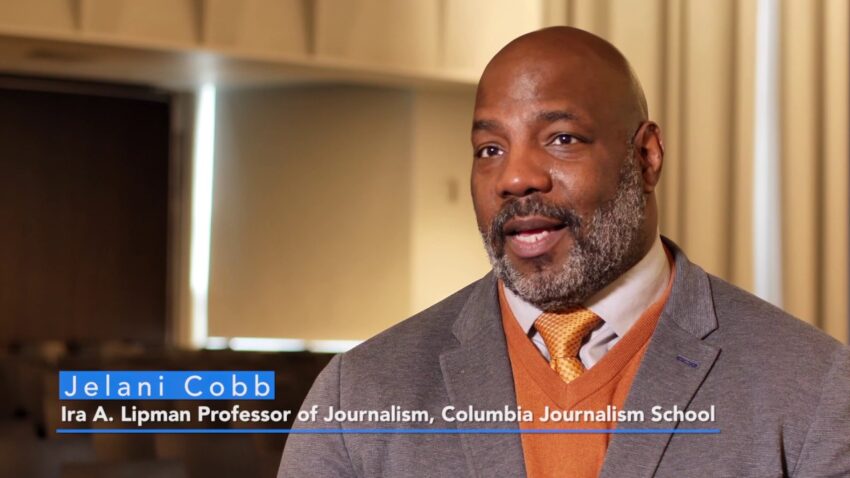
‘Capitalism Crisis’ or Not, Cobb Must Fundraise
An M.S. in journalism from Columbia University — “all told a nine and a half month program — costs an estimated $121,290. Depending on where you’re looking, a journalist with a master’s degree makes on average between $36,000 and $58,000 after graduating,” Calder McHugh wrote Friday for Politico magazine, profiling new journalism school dean Jelani Cobb.
“Columbia can offer generous aid packages (73 percent of those who applied for scholarship aid received funding and the median award is approximately $40,000), but its students are also regularly drowning in debt. For many young people with journalistic aspirations, the training that Columbia provides is a luxury they literally cannot afford.”
McHugh also wrote, “Journalism school is too expensive. This is especially true given that journalists can’t hope to make much money after they graduate. And it gets worse when you think about where newly minted graduates end up right out of school. They either don’t want to or can’t afford to take a low-paying local news job in a smaller city or town — if those even exist anymore. So they stay in New York or Washington.
“This contributes to the professional networks that drive job opportunities and elite bias in the media. These biases lead to worse reporting, fewer people interested in journalism and fewer checks on the crooks that steal from the poor and give to the rich, who are the ones setting the market on how expensive graduate programs are. Journalism school’s big price tag is actually a crisis of capitalism. . . .
“Which means he needs to fundraise to make it cheaper.
“Beyond the issue of cost, there is the question of what nine months in this highly intensive place can teach students. Certainly, it can help them build a certain skill set: how to report and interview; how to write clearly; how to file a FOIA request. And it certainly links students into professional networks — and to coveted internships and jobs. Cobb is also laser-focused on historical context, something he says young journalists can easily lack. He wants them to have at least ’50 years of working knowledge’ in major areas of interest from U.S. foreign policy to Capitol Hill to criminal justice. And though he’s a liberal columnist, he says that students are often ‘surprised’ by his commitment to not imposing personal views on readers.
“One of the clichés of Dr. Cobb’s class is, ‘the information you have is not as important as the information you don’t have,’ Cobb says.”
McHugh also wrote, ” ‘The arc of my career has been being a Black person in rooms where there were fewer and fewer Black people,’ Cobb says. ‘That is what it is. But also, why critique it if you’re not interested in actually trying to change it?’ ”
Law Curbing Recording of Police Challenged
“Several news organizations, including The Arizona Republic, are joining the ACLU of Arizona to challenge a new state law banning close-range recordings of Arizona police,” Chelsea Curtis reported Tuesday, updated Wednesday for the Arizona Republic.
“House Bill 2319 was signed by Gov. Doug Ducey on July 6, making it illegal for Arizonans to record within 8 feet of law enforcement activity. Violators could face a misdemeanor charge, but only after being verbally warned and continuing to record anyway.
“The law is scheduled to take effect on Sept. 24. Several news organizations and the ACLU of Arizona filed a complaint in U.S. District Court for Arizona on Tuesday alleging the new law violates the First and 14th amendments. . . .
“Among the plaintiffs were companies that own and operate The Republic, Fox 10 News, 12 News, ABC15, Arizona Mirror, Arizona’s Family, KGUN, KOLD 13 News and Telemundo Arizona.
“Nonprofits such as the Arizona broadcasters and newspapers associations, National Press Photographers Association and ACLU of Arizona also were listed as plaintiffs. . . .”
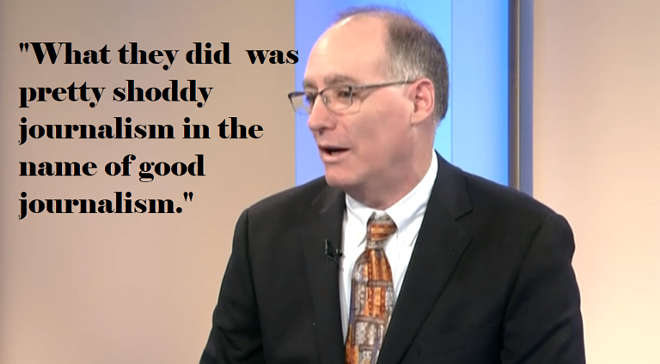
Editor Won’t Agree to ‘Fascist’ GOP Limits
“Florida Gov. Ron DeSantis, a likely presidential candidate in 2024, scheduled a trip to Ohio Friday to stump for Senate candidate J.D. Vance, and our reporters were not there because of ridiculous restrictions that DeSantis and Vance placed on anyone covering the event,” Chris Quinn, editor of cleveland.com/The Plain Dealer, wrote Saturday.
“The worst of the rules was one prohibiting reporters from interviewing attendees not first approved by the organizers of the event for DeSantis and Vance. When we cover events, we talk to anyone we wish. It’s America, after all, the land of free speech. At least that’s America as it exists today. Maybe not the America that would exist under DeSantis and Vance.
“Think about what they were doing here. They were staging an event to rally people to vote for Vance while instituting the kinds of policies you’d see in a fascist regime. A wannabe U.S. Senator, and maybe a wannabe president.
“Another over-the-top rule was one reserving the right to receive copies of any video shot of the event for promotional use. That’s never okay. News agencies are independent of the political process. We do not provide our work product to anyone for promotional use. To do so would put us in league with people we cover, destroying our credibility.
“Yet another of the rules reserved the right to know in what manner any footage of the event would be used. We are news people. We use footage on news platforms. But this rule set up a situation in which reporters could be grilled on their intentions.
“I’m scratching my head over one other rule, one that prohibited reporters from entering the hotel rooms of any attendees of the event. If someone invites a reporter into a hotel room for an interview, what’s the harm?
“Anyway, we didn’t accept the limitations, because they end up skewing the facts. If we can speak only with attendees chosen by the candidate, we don’t get a true accounting of what people thought of the event. You get spin from the most ardent supporters. . . .”
- Sam Allard, Cleveland Scene: PD Editor Chris Quinn Gets to Be Hero of Journalism for Doing Same Shit He Dragged Reporters for Doing
- Jeremy Barr, Washington Post: Vance, DeSantis rally puts ‘highly unusual’ restrictions on press
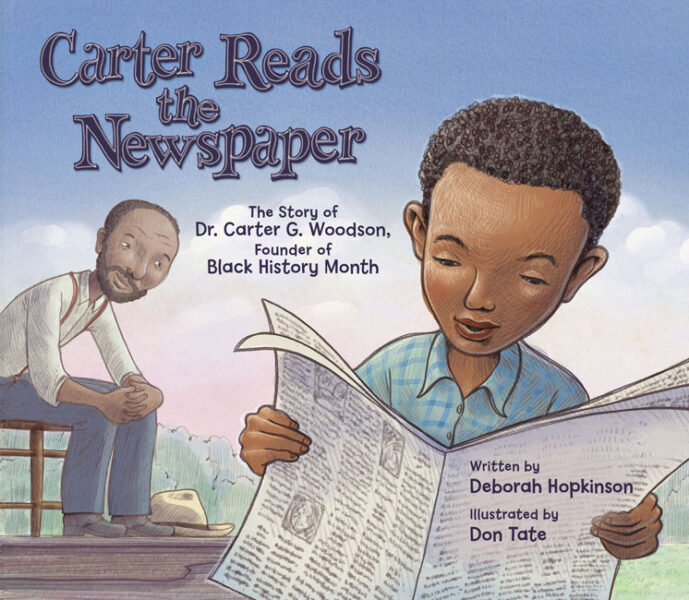
Newspapers Helped Shape ‘Father of Black History’
Some may know that Carter G. Woodson is considered the “father of Black history,” having founded Negro History Week, which became Black History Month.
But a children’s book fills out the picture by describing the importance of newspapers to his story.
“Carter G. Woodson was born to two formerly enslaved people ten years after the end of the Civil War,” reads a summary. “Though his father could not read, he believed in being an informed citizen, so Carter read the newspaper to him every day. As a teenager, Carter went to work in the coal mines” of West Virginia, “and there he met Oliver Jones, who did something important: he asked Carter not only to read to him and the other miners, but also research and find more information on the subjects that interested them.”
The book adds, “But newspapers weren’t easy to come by. Sometimes Carter read from old ones that had been used to wrap up food or packages.
“Reading the newspaper gave Carter his first glimpse of the wider world.”
The summary continues, “ ‘My interest in penetrating the past of my people was deepened,’ Carter wrote. His journey would take him many more years, traveling around the world and transforming the way people thought about history.”
Author Deborah Hopkinson tells Journal-isms that the 2019 book is now out in paperback, and was a 2020 finalist for the Oregon Book Award.
The book is also a YouTube video.
- Facebook: Representation in the World of Children’s Books — Part One (National Park Service interview with illustrator Don Tate) (Feb. 26)
- Peachtree Publishing Co.: Author, Illustrator interview with Deborah Hopkinson and Don Tate (2019)
Nepotism a Barrier to Diversity in Coaching
“A propensity to follow in Dad’s footsteps is a common one across the sport, but it has also helped perpetuate a lack of racial and ethnic diversity at the highest levels of coaching in college football,” Ralph D. Russo and Eric Olson reported Tuesday for the Associated Press.
“The Associated Press examined the coaching rosters of the 65 schools that compete in Power Five conferences and found 25 instances of family members on the same coaching staff.
“Of those, 22 involved white coaches, including at Iowa where coach Kirk Ferentz’s son, Brian, is the offensive coordinator. It also includes Purdue, where coach Jeff Brohm has brothers as offensive coordinator and chief of staff. . . .”
More Blows to Diversity at Warner Bros. Discovery
“Former HBO Max executives say the streaming service has been left with few people of color to oversee its diverse slate of programming as Warner Bros. Discovery continues its ongoing corporate reshuffling,” Adam Manno reported Thursday for the Daily Beast.
“The platform reportedly laid off close to 70 people this month. That includes the entire teams overseeing unscripted, kids and family, and international content, according to two former HBO Max execs who asked not to be named.
“Those three divisions, responsible for buying shows from production companies and creators and working closely with them during production, are now completely gone.
“One former employee says as many as 13 people of color previously in charge of developing shows like The Gordita Chronicles and the Spanish-language docuseries Menudo: Forever Young have been let go, likely influencing the types of shows and movies that are greenlit moving forward. Among those laid off are Jen Kim, an Asian woman who served as the senior vice president of the international team, and Kaela Barnes, a Black woman who worked under Kim.
“ ‘I don’t think anyone knows just how white the staff is,’ one former executive told The Daily Beast. . . .”
- Jarvis De Berry, MSNBC: HBO documentary ‘Katrina Babies’ isn’t the tearjerker you might expect it to be” The film is an example of young Black people wresting the narrative away from the presumed experts.
- Emil Guillermo, Asian American Legal Defense and Education Fund: Remembering Ninoy Aquino while saying farewell to CNN’s “Reliable Sources”
- Selome Hailu, Variety: Warner Bros. Discovery Cuts Four Top OWN Execs (Aug. 19)
- Borys Kit, Hollywood Reporter: DC’s Kevin Feige Found? Producer Dan Lin in Talks to Take Control of Film, TV for Superhero Arm
- Robert Reich, the Guardian: The changes at CNN look politically motivated. That should concern us all
- Erik Wemple, Washington Post: What does Brian Stelter’s ouster from CNN have to do with Fox News? Everything.
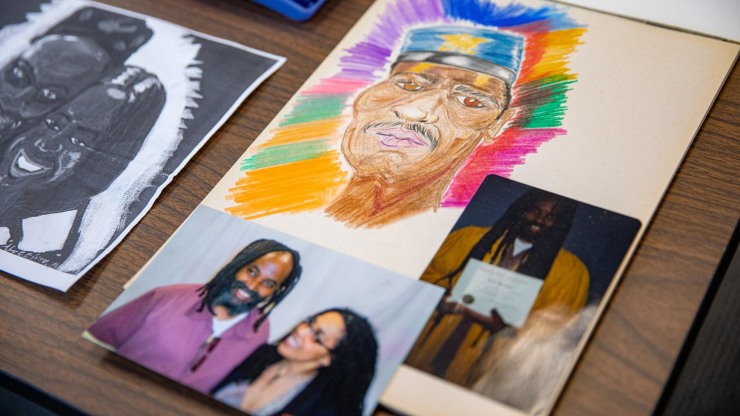
Brown U. Acquires Papers of Mumia Abu-Jamal
“The John Hay Library, home to Brown University’s special collections, in partnership with Brown’s Pembroke Center, has acquired a vast set of records, writings and artwork from political activist Mumia Abu-Jamal,” the university announced Wednesday. “A journalist who was convicted of murder and sentenced to death in 1982, Abu-Jamal’s incarceration and sentencing have stirred fierce national debates about racial injustice and the ethics of the death penalty.
“The library has also obtained related personal papers from Johanna Fernández — a Brown Class of 1993 graduate and esteemed historian of social movements and 20th century American history — who has been a longtime advocate for Abu-Jamal and has for decades maintained his innocence.
“Questions about Abu-Jamal’s guilt have prompted deep legal examination and fueled international discussion since the 1980s, and the acquisition of his papers is part of a broader initiative to advance research on incarceration. Curated by Mary Murphy, the Nancy L. Buc ’65 Pembroke Center archivist, the Abu-Jamal papers will serve as anchors for a new strategic collecting focus at the John Hay Library: Voices of Mass Incarceration. . . .”
- Jennifer Schuessler, New York Times: Brown University Acquires the Papers of Mumia Abu-Jamal
Keeping the Focus on Environmental Racism
“I love when environmental justice (injustice) stories are placed on A1, above the fold,” Darryl Fears wrote on LinkedIn.
“Black Memphis is getting a mountain of toxic waste, courtesy of the Tennessee Valley Authority, the nation’s largest public utility.”
Fears’ Washington Post story, datelined Memphis and published in Monday’s print edition, began, “It’s rare for a Black community to notch a win against a large industrial polluter, but that’s what happened on this city’s south side.
“Residents stood up to a proposal by two oil and gas industry giants to build a pipeline under their properties and forced them to back down. When the news broke last year in July, the rejoicing began.
“But it didn’t last long.
“Just two weeks after Valero Energy Corp. and Plains All-American abandoned their pipeline bid, the Tennessee Valley Authority announced its plan to truck millions of tons of contaminated coal ash through south Memphis for nearly 10 years and dump it in a landfill there. And there was nothing residents could do to stop it.
“What happened in south Memphis is another example of how industries constantly work to fight their way into communities of color already teeming with pollution — and get their way more often than not. . . .”
Fears is beginning a Nieman fellowship at Harvard.
Short Takes
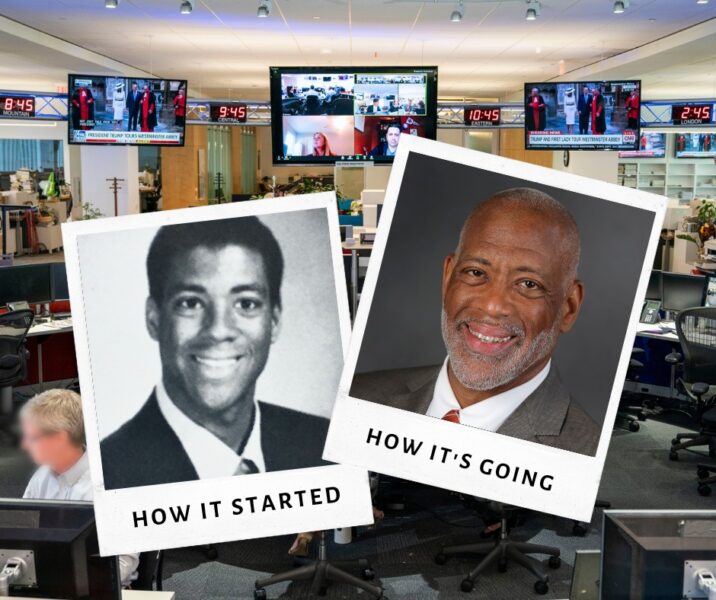
- Mizell Stewart III, vice president/news performance, talent and partnerships for Gannett’s USA Today Network, announced his retirement Thursday, effective Oct. 1. Stewart, 57, told Facebook followers, “I’m looking forward to devoting my full energy towards developing future leaders in newsrooms and civic institutions of all kinds and doing some consulting work for media companies. I’ll also continue my non-profit work as a trustee of my alma mater, Bowling Green State University.” Stewart noted that he has led newsrooms at the Tallahassee Democrat, the Akron (Ohio) Beacon Journal and the Evansville (Ind.) Courier & Press, and led corporate teams at the E.W. Scripps Co., Journal Media Group and Gannett’s USA Today Network. Stewart has also been president of the American Society of News Editors.
- “The National Association of Hispanic Journalists, the Asian American Journalists Association and the National Association of Black Journalists said Friday they were “deeply troubled by the findings of a recent analysis revealing racial disparities in a New York Times performance evaluation system, which has given ‘significantly lower ratings’ to employees of color. The analysis was conducted by Times journalists with the NewsGuild of New York, the union that represents New York Times employees. . . .”
- “Eight months ago, a Los Angeles Times investigation revealed portions of racist and homophobic text messages exchanged by at least a dozen Torrance police officers, a scandal that sparked an investigation by the California attorney general’s office,” James Queally reported Thursday for the Times. “Criminal cases in which the officers were involved continue to be dismissed, and at least one man has been released from prison. Lawsuits filed against officers involved have already cost Torrance more than $10 million. Still, most of the officers implicated remain employed by the city. . . . there’s little evidence that Torrance officials have taken tangible steps toward reform since the scandal exploded. . . .”
- People “who read an article that used person-centered terms for their group (e.g., person with substance use disorder) felt more humanized and trusted the article more than people who read a story with stigmatizing labels (e.g., drug abuser),” according to the Center for Media Engagement. It partnered with Resolve Philly, an organization that promotes best practices for equitable and community-based journalism. They surveyed people who have experienced homelessness, people with disabilities and people in recovery from a substance use disorder.
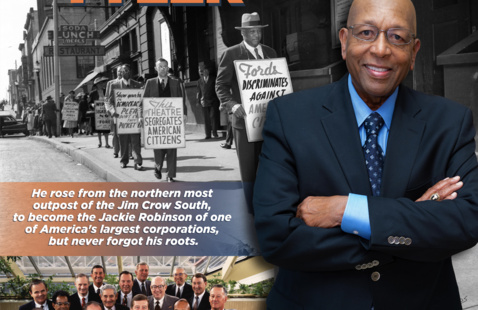
- “Before stepping down from his post as the inaugural dean of Morgan State University’s School of Global Journalism and Communication, DeWayne Wickham, now dean emeritus, worked with University President David K. Wilson to establish the Center for New Media and Strategic Initiatives,” the school announced Friday. “Under the leadership of Wickham, who serves as its director, the Center is producing contemporary and historical film documentaries and podcasts on life in the African diaspora, while aiding in the expansion of the ranks of Black journalists and news executives nationwide. The Center’s first major film project is ‘The Calvin Tyler Story,’ a compelling film on the life and accomplishments of Morgan alumnus and philanthropist Calvin E. Tyler Jr. The documentary will make its debut on Maryland Public Television (MPT) on Monday, Sept. 5, at 8 p.m. and will re-air on Sunday, Sept. 11, at 7 p.m., as part of a slate of content and special programming for MPT’s third annual HBCU Week. . . .”
- President Biden “enjoys his highest approval rating among Democrats (79%), Black voters (68%), urban residents (50%) and women (47%), while he has some of his lowest ratings among Latinos (40%), men (36%), those 18-34 (36%), rural residents (21%) and Republicans (7%),” according to a national NBC News poll conducted after the FBI searched Trump’s Florida home and recovered documents marked as “top secret” earlier this month, Mark Murray reported Sunday for NBC News. The poll also showed that threats to democracy clocked in as the most important issue facing the country for a plurality of registered voters.
- In the Russian news media, “The reporting is less about Ukraine than ‘about opposing Western plans to get control of Mother Russia,’ said Stanislav Kucher, a veteran Russian television host now consulting on a project to get Russians better access to banned news outlets,” Neil MacFarquhar reported Monday for the New York Times. “The United States is the main antagonist, with Europe and NATO its lackeys. On state media, Russia is a pillar of traditional values, bound to prevail over the moral swamp that is the West. There is a daily fixation with L.G.B.T.Q. matters. To watch Russian television is to get the impression that the gay community runs the decadent Western world. For all their professed shock and horror, Russian news outlets avidly air footage with lurid depictions of gay life. . . .”
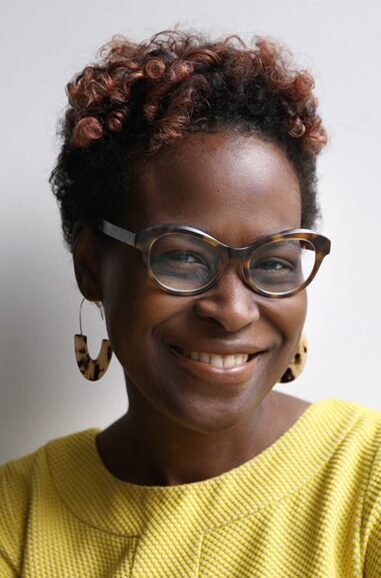 Errin Haines (pictured), editor at large and co-founding member of The 19th, is receiving the 2022 NLGJA: The Association of LGBTQ Journalists Leadership Award, the organization announced Thursday. “Through her work at The 19th, Errin has been a champion of the fair and accurate coverage that we advocate for,” Executive Director Adam Pawlus said. “Errin has worked to build a newsroom that reflects the diversity of our country. She strives to elevate the voices of LGBTQ people and women, and fully embodies the spirit of this award.”
Errin Haines (pictured), editor at large and co-founding member of The 19th, is receiving the 2022 NLGJA: The Association of LGBTQ Journalists Leadership Award, the organization announced Thursday. “Through her work at The 19th, Errin has been a champion of the fair and accurate coverage that we advocate for,” Executive Director Adam Pawlus said. “Errin has worked to build a newsroom that reflects the diversity of our country. She strives to elevate the voices of LGBTQ people and women, and fully embodies the spirit of this award.”
 “White House Press Secretary Karine Jean-Pierre was having none of it,” Jackson Richman reported Thursday for Mediaite. “Throughout Thursday’s White House press briefing, Angolan TV anchor Hariana Veras (pictured) tried to get in a question only to not be called on. . . . Veras kept interrupting, begging to ask a question, only for Jean-Pierre to say, ‘You’re being disrespectful.’ . . . This is not the first time Veras has interrupted a White House press briefing. . . .”
“White House Press Secretary Karine Jean-Pierre was having none of it,” Jackson Richman reported Thursday for Mediaite. “Throughout Thursday’s White House press briefing, Angolan TV anchor Hariana Veras (pictured) tried to get in a question only to not be called on. . . . Veras kept interrupting, begging to ask a question, only for Jean-Pierre to say, ‘You’re being disrespectful.’ . . . This is not the first time Veras has interrupted a White House press briefing. . . .”
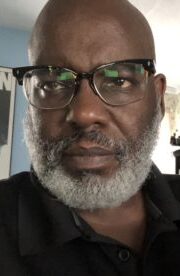 “I edited your last column Thursday,” Jeffery Gerritt, editorial page editor of the Pittsburgh Post-Gazette, wrote in a “Dear Tony” column to his departed columnist Tony Norman (pictured). “Thanks for blowing me a kiss. As usual, it was about 300 words too long. But as always, beneath the padding lay a gem of insight, humanity and humor. You’re one of the few columnists who can make me laugh, no matter how serious the subject. We both know the world is a hot mess, but we also know a person without humor and love is just taking up space. . . .” Of course, there is more. Norman left the Post-Gazette, where he worked for 34 years, to become a columnist at the weekly NEXTpittsburgh.
“I edited your last column Thursday,” Jeffery Gerritt, editorial page editor of the Pittsburgh Post-Gazette, wrote in a “Dear Tony” column to his departed columnist Tony Norman (pictured). “Thanks for blowing me a kiss. As usual, it was about 300 words too long. But as always, beneath the padding lay a gem of insight, humanity and humor. You’re one of the few columnists who can make me laugh, no matter how serious the subject. We both know the world is a hot mess, but we also know a person without humor and love is just taking up space. . . .” Of course, there is more. Norman left the Post-Gazette, where he worked for 34 years, to become a columnist at the weekly NEXTpittsburgh.
- Four projects have been selected to participate in the first edition of “Oye: The Lab for Latinx Creators,” NPR and LAist Studios announced Thursday at Podcast Movement, a conference of podcasters taking place in Dallas. The working titles are “Excessive: A Podcast About Being too Much,” about Latina fashion; “Afrodiastories,” which “aims to resurface the legacies of trailblazing Afro Latina women and men across Central and South America, and uncover the histories and social movements behind the stories to revise a whitewashed Latin American perspective,” “The Incredible Man,” which “explores the impact of Kaliman, a popular superhero in Latin America,” and “El Closet,” which “explores the stories of queer Latinx folks raised in conservative, evangelical households and follows their journeys in redefining belonging.”
- The National Endowment for the Humanities has announced $31.5 million in grants for 226 humanities projects across the country, including “The Colfax Massacre,” which examines “Reconstruction-era violence between southern whites and African Americans and its legal and social legacy”; an anthology of 400 years of Latino poetry and public programs examining Mexican Americans’ representation and participation in American filmmaking from the 1920s to the present. Current
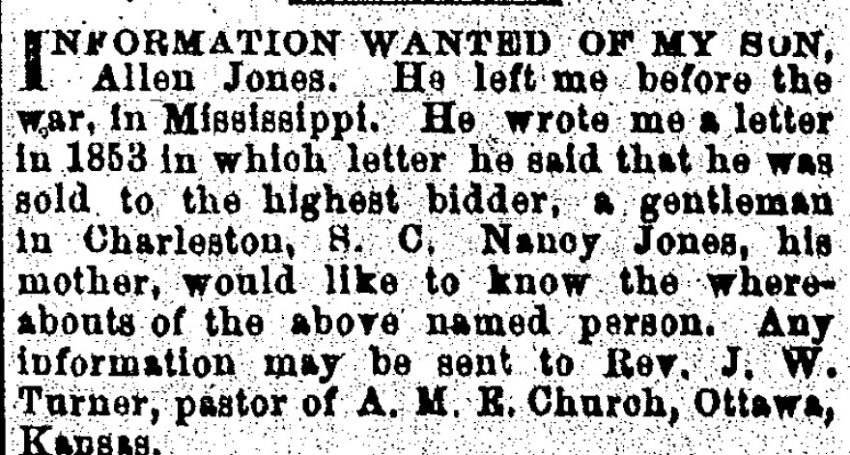
Recorder of Philadelphia. (Credit: Last Seen Project)
- After the Civil War, the newly emancipated “tried to reunite their families. Thousands of them placed advertisements in their local newspapers, providing as many details as they could about when they last saw their loved ones and who they were sold to. . . . Many of these families were never reunited. But their messages are being collected and archived by historians and genealogists, and archives like the Last Seen Project and the Georgetown Memory Project are now helping their descendants find their people,” public radio’s “The Takeaway” discussed Monday. Rachel Swarns, contributing writer at The New York Times and an associate professor of journalism at New York University, was part of the conversation.
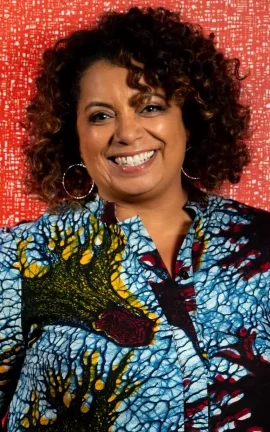 “‘Good Day L.A.’ anchor Michaela Pereira (pictured), one of local TV’s most popular news personalities, is leaving Fox 11’s morning newscast,” Greg Braxton reported Wednesday for the Los Angeles Times. “Pereira, who returned to Los Angeles in 2020 to anchor a revamped broadcast after a high-profile stint at CNN and another at HLN, is expected to announce to viewers during Thursday’s telecast that she is leaving to explore ‘new opportunities.’ Her last day will be Sept. 9. . . .”
“‘Good Day L.A.’ anchor Michaela Pereira (pictured), one of local TV’s most popular news personalities, is leaving Fox 11’s morning newscast,” Greg Braxton reported Wednesday for the Los Angeles Times. “Pereira, who returned to Los Angeles in 2020 to anchor a revamped broadcast after a high-profile stint at CNN and another at HLN, is expected to announce to viewers during Thursday’s telecast that she is leaving to explore ‘new opportunities.’ Her last day will be Sept. 9. . . .”
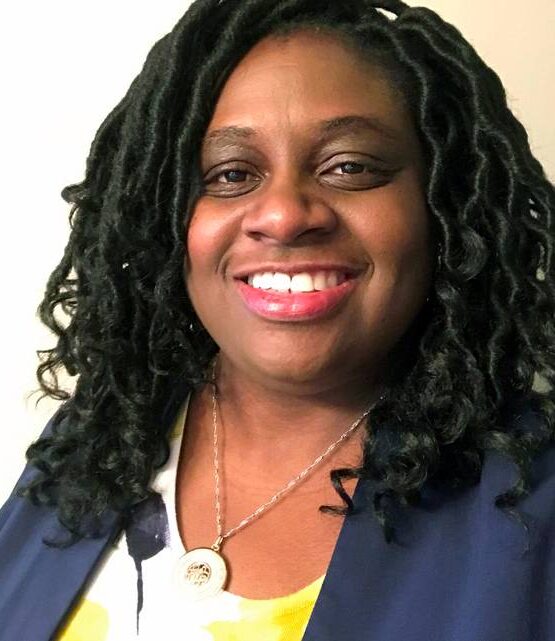 In Charlotte, N.C., “We’re in the planning stages of creating mobile newsrooms where we will go around the community and set up shop in some of the Black communities and report from there and allow people and invite people to come in and tell us the stories they want us to write about,” Rana Cash (pictured), executive editor of the Charlotte Observer, told Gwendolyn Glenn of Charlotte public radio’s WFAE-FM on Wednesday. “We recently hired a race, culture and community engagement editor so that we can be more intentional about having these conversations with the community, inviting them in and going into their spaces, wherever that might be. And then we’ve put great focus on making sure that our content is diverse, it’s inclusive. We’re not writing about people; we’re writing for a broader audience and being intentional in the coverage that we offer.” It was Cash’s first interview since becoming editor nearly a year ago, the station said.
In Charlotte, N.C., “We’re in the planning stages of creating mobile newsrooms where we will go around the community and set up shop in some of the Black communities and report from there and allow people and invite people to come in and tell us the stories they want us to write about,” Rana Cash (pictured), executive editor of the Charlotte Observer, told Gwendolyn Glenn of Charlotte public radio’s WFAE-FM on Wednesday. “We recently hired a race, culture and community engagement editor so that we can be more intentional about having these conversations with the community, inviting them in and going into their spaces, wherever that might be. And then we’ve put great focus on making sure that our content is diverse, it’s inclusive. We’re not writing about people; we’re writing for a broader audience and being intentional in the coverage that we offer.” It was Cash’s first interview since becoming editor nearly a year ago, the station said.
- At the end of fiscal 2022 on June 30, the WNYC newsroom was “45% BIPOC [Black, Indigenous, People of Color] journalists, and newsroom editors were just under 50% BIPOC, and 38% BIPOC for all NYPR staff,” the New York public radio station said Wednesday in a message accompanying its inaugural Diversity, Equity, and Inclusion report. “We introduced a leadership coaching program – Accelerating Leaders of Color – that provides mentorship to BIPOC staff. We have increased our efforts around accessibility and continue to identify new opportunities to do so. And we have invested in our hiring and retention practices. . . .”
- The “CBS Evening News” devoted a segment Wednesday to “Black Is Beautiful: The Photography of Kwame Brathwaite,” from the New York Historical Society “on view through January 15, 2023, the first major exhibition dedicated to a pivotal figure of the second Harlem Renaissance who helped launch and popularize the influential ‘Black is Beautiful’ movement of the 1960s.” A “Community Appreciation Day” is to be held at the society’s museum on Sept. 23, hosted by entertainment journalist Patrick L. Riley, long active in the National Association of Black Journalists.
- Five news organizations will participate in the American Press Institute’s communities sprint program, a five-month cohort aimed at helping newsrooms better engage with and serve diverse audiences, the institute announced Wednesday. They are the Arizona Daily Star in Tucson; the Charlotte Observer; KPBS in San Diego, Calif.; the Milwaukee Journal Sentinel; and a team of McClatchy sites in California: the Sacramento Bee, the Fresno Bee and the Modesto Bee. In partnership with the Maynard Institute for Journalism Education, the “participating news organizations will test new strategies to build relationships with underserved communities, rebuild trust, diversify sources and coverage, experiment with new platforms, and deliver Spanish-language content. . . .”
 V. Dion Haynes (pictured), real estate editor at The Washington Post for more than a decade, is “leaving The Post after 17 years to become managing editor for special projects at the American Psychological Association,” the Post announced internally. “Under his leadership, the Real Estate team has won nearly 50 awards from the National Association of Real Estate Editors, and he has served as president and chair of the organization. Last year, the Real Estate section won a platinum award – the organization’s highest honor – for a story about systemic racism in the housing market. Dion also is the editor of Top Workplaces, The Post’s popular annual magazine dedicated to the 200 local companies that are best loved by their employees, and has co-hosted a live event honoring the winners each spring.”
V. Dion Haynes (pictured), real estate editor at The Washington Post for more than a decade, is “leaving The Post after 17 years to become managing editor for special projects at the American Psychological Association,” the Post announced internally. “Under his leadership, the Real Estate team has won nearly 50 awards from the National Association of Real Estate Editors, and he has served as president and chair of the organization. Last year, the Real Estate section won a platinum award – the organization’s highest honor – for a story about systemic racism in the housing market. Dion also is the editor of Top Workplaces, The Post’s popular annual magazine dedicated to the 200 local companies that are best loved by their employees, and has co-hosted a live event honoring the winners each spring.”
 A. Sherrod Blakely (pictured), a part-time lecturer at Boston University’s College of Communication, among other roles, moves to full time. Blakely chairs the Sports Task Force of the National Association of Black Journalists, is NBA content creator for Facebook’s Bulletin.com website, an NBA Front Office Insider for Bleacher Report, creator and co-host of the A-List Podcast, and Diversity Committee chair of the Associated Press Sports Editors.
A. Sherrod Blakely (pictured), a part-time lecturer at Boston University’s College of Communication, among other roles, moves to full time. Blakely chairs the Sports Task Force of the National Association of Black Journalists, is NBA content creator for Facebook’s Bulletin.com website, an NBA Front Office Insider for Bleacher Report, creator and co-host of the A-List Podcast, and Diversity Committee chair of the Associated Press Sports Editors.
- “The Association of Journalists of Puerto Rico (Asppro), the Overseas Press Club (OPC), the Association of Photojournalists of Puerto Rico (AFPR) and the National Association of Hispanic Journalists (NAHJ) condemned this morning the attack and the excessive use of force by officers of the Police Shock Force against journalists and photojournalists,” the groups said Friday, “suring the mobilization of uniformed personnel against demonstrators protesting against LUMA Energy last night on Fortaleza Street, in Old San Juan. . . .”
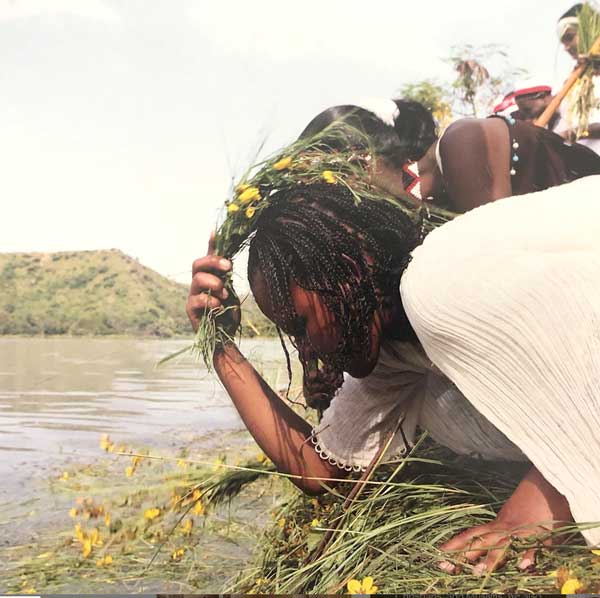
to 2014.
- Some cultures “consider the rivers of their realms to be sacred – beseeching them with prayers, partaking of their waters for joyous and somber rituals,” the Associated Press reported Saturday. “Today, even as these rivers remain an object of devotion, some face dire threats – severe pollution, diminution of their flow, hydroelectric projects. In Nepal, many devout Hindus no longer cleanse the bodies of their newly deceased loved ones with the waters of the Bagmati River – it’s befouled by sewage. In the Middle East, the Jordan River’s dwindling waters are a dull greenish brown as they approach the site revered as where Jesus was baptized. . . .”
- “The Reporters Association of Liberia, the largest auxiliary under the Press Union of Liberia, has launched a fundraising scheme signed at helping its ailing members,” Willie N. Tokpah reported Aug 19 for Front Page Africa. “In a Press Conference held in Monrovia Thursday, August 18, RAL President Cecilia Clarke noted that there have been instances of reporters being hospitalized in the country and [who] have struggled to address their medical bills. This, according to Madam Clarke, is a result of reporters being underpaid, thus making it difficult to address urgent needs including medical bills. . . .”
- “Ecuadorian journalist Charly Castillo of the digital news outlet El Ferrodiario de Durán received last night a package at the door of his home containing blood with clots, inside plastic bags,” Fundamedios reported via LatAm Journalism Review. “He gave the alert on social media: ‘A few minutes ago, outside my home, in Durán [Ecuador], two bags of blood were left at my doorstep. It could be animal blood, but I am not sure.’ (…) Castillo said he was ‘very scared and terrified.’ He added: ‘I don’t know what to think and I’m just waiting to access the cameras to be able to draw a conclusion.’ This is not the first time that the journalist has been threatened for his investigative work in Durán.”
- Dismayed to learn that a Hanoi appeal court upheld Vietnamese journalist Pham Doan Trang’s nine-year jail sentence after she refused to plead guilty to “anti-state propaganda,” Reporters Without Borders Thursday called on Vietnam’s commercial partners, including the European Union and United States, “to use their trade agreements with Hanoi to press for the release of this journalist, who was awarded the RSF Press Freedom Prize in 2019. . . .”
- The National Association of Journalists of Bolivia (ANPB, by its Spanish acronym) declared itself in a state of emergency, citing a violation of rights, “intimidation and judicial and political persecution, as well as the economic suffocation of media and journalists through the discretional distribution of advertising,” Los Tiempos reported Wednesday via the LatAm Journalism Review.
- “The Nicaraguan government took over the facilities of a long-standing newspaper critical of President Daniel Ortega to turn the space into a ‘cultural center,’ the newspaper said on Tuesday,” Ismael Lopez and Kylie Madry reported for Reuters. “The paper ‘La Prensa,’ one of the oldest in the Western hemisphere, was occupied by Nicaraguan police forces last year and several of its executives detained. Since then, a team of reporters in exile have kept the site online from abroad. . . .”

- “The Israeli army and security forces were responsible for at least 479 violations of media and journalists’ rights in Palestine during the first half of 2022, including the assassination of Al Jazeera correspondent Shireen Abu Aqleh, the International Federation of Journalists said Aug. 19. It joined its affiliate, the Palestine Journalists Syndicate (PJS) “in condemning these attacks and urges the Israeli authorities to take steps to end the climate of impunity with which they are carried out. . . .”
- Nigeria’s broadcasting regulator announced it will revoke the licenses of 52 media organizations over unpaid fees, in a move the country’s journalist union says is “ill advised,” Medina Dauda reported Saturday for the Voice of America. “The head of the National Broadcasting Commission (NBC), Mallam Balarabe Illelah, announced the decision Friday at a news conference in Nigeria’s capital, Abuja, Friday. “The affected stations owe the commission a combined $6.2 million (2.66 billion naira), the commission said. In a press release, the NBC said it published a list of media companies owing license fees in May and gave the organizations a grace period to pay the debt and avoid having licenses revoked. . . . Nigeria’s Union of Journalists described the move as ‘hasty’ and ‘ill advised.’ . . .”
- “Nigerian authorities should immediately drop their defamation and cyberattack investigations into publisher Agba Jalingo and stop harassing the journalist, who has been repeatedly targeted because of his work and is already owed considerable court-sanctioned damages for his protracted arrest in 2019,” said Angela Quintal, Africa program coordinator for the Committee to Protect Journalists, Thursday in New York. “Instead of wasting resources yet again on attempts to criminalize Jalingo’s journalism, authorities should ensure that any such complaints are handled through alternative dispute resolution mechanisms.” On Aug. 19, a group of about 15 police officers arrested Jalingo, publisher of the privately owned news website CrossRiverWatch, at his home in Ogudu, in Lagos state, according to Jalingo and other journalists. “Officers detained Jalingo at a police station close to his home, and then transferred him to Ikeja, the capital of Lagos state, where he was held until about 11 a.m. on August 20; then, officers flew Jalingo to a police station in the Federal Capital Territory, a federally administered region of Abuja, the capital, the journalist told CPJ. . . . Authorities released Jalingo on bail at about 10 p.m. on August 20. . . . “
- “Zimbabwean authorities should investigate the brutal assault of four journalists working for private media outlets, bring the perpetrators to justice, and ensure that party supporters do not attack members of the press covering political rallies,” the Committee to Protect Journalists said Thursday. “Around 12:30 p.m. on August 25, the journalists were injured after they filmed a convoy of 20 vehicles of the ruling Zimbabwe African National Union-Patriotic Front (ZANU-PF) party . . . About 10 ZANU-PF supporters, some of whom wore party regalia, punched and kicked the journalists all over their bodies and ordered them to delete their photos and videos,” Tongai Mwenje, managing editor of news website SportBrief, told CPJ. The journalists complied and the supporters confiscated the two cellphones, camera, and car key of Toneo Rutsito, editor of Technomag, CPJ said.
- In Britain, the Chronicle World blog is celebrating its 25th anniversary. It calls itself “the UK’s leading independent online news magazine on Black Britain, Afro-Europe and the Diaspora.” Chronicle World was founded in 1997 by sociologist, town planner and cyber-scholar Professor Thomas L Blair.
To subscribe at no cost, please send an email to journal-isms+subscribe@groups.io and say who you are.
Facebook users: “Like” “Richard Prince’s Journal-isms” on Facebook.
Follow Richard Prince on Twitter @princeeditor
Richard Prince’s Journal-isms originates from Washington. It began in print before most of us knew what the internet was, and it would like to be referred to as a “column.” Any views expressed in the column are those of the person or organization quoted and not those of any other entity. Send tips, comments and concerns to Richard Prince at journal-isms+owner@
View previous columns (after Feb. 13, 2016).
View previous columns (before Feb. 13, 2016)
- Diversity’s Greatest Hits, 2018 (Jan. 4, 2019)
- Book Notes: Is Taking a Knee Really All That? (Dec. 20, 2018)
- Book Notes: Challenging ’45’ and Proudly Telling the Story (Dec. 18, 2018)
- Book Notes: Get Down With the Legends! (Dec. 11, 2018)
- Journalist Richard Prince w/Joe Madison (Sirius XM, April 18, 2018) (podcast)
- Richard Prince (journalist) (Wikipedia entry)
- February 2018 Podcast: Richard “Dick” Prince on the need for newsroom diversity (Gabriel Greschler, Student Press Law Center, Feb. 26, 2018)
- Diversity’s Greatest Hits, 2017 — Where Will They Take Us in the Year Ahead?
- Book Notes: Best Sellers, Uncovered Treasures, Overlooked History (Dec. 19, 2017)
- An advocate for diversity in the media is still pressing for representation, (Courtland Milloy, Washington Post, Nov. 28, 2017)
- Morgan Global Journalism Review: Journal-isms Journeys On (Aug. 31, 2017)
- Diversity’s Greatest Hits, 2016
- Book Notes: 16 Writers Dish About ‘Chelle,’ the First Lady
- Book Notes: From Coretta to Barack, and in Search of the Godfather
- Journal-isms’ Richard Prince Wants Your Ideas (FishbowlDC, Feb. 26, 2016)
- “JOURNAL-ISMS” IS LATEST TO BEAR BRUNT OF INDUSTRY’S ECONOMIC WOES (Feb. 19, 2016)
- Richard Prince with Charlayne Hunter-Gault, “PBS NewsHour,” “What stagnant diversity means for America’s newsrooms” (Dec. 15, 2015)
- Book Notes: Journalists Follow Their Passions
- Book Notes: Journalists Who Rocked Their World
- Book Notes: Hands Up! Read This!
- Book Notes: New Cosby Bio Looks Like a Best-Seller
- Journo-diversity advocate turns attention to Ezra Klein project (Erik Wemple, Washington Post, March 5, 2014)

